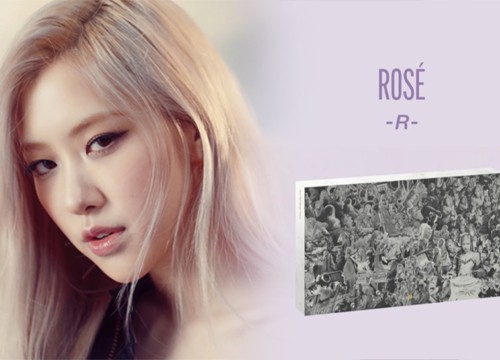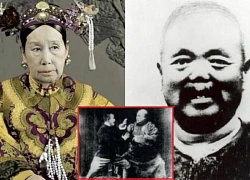Quynh Tran JP was criticized by Nathan Lee as "terrible, barbaric" because of the clip eating the bear's paw

5 | 0 Discuss | Share
However, in another cute story, the true origin of sushi is a bit more mysterious. The fourth-century Chinese dictionary mentions salted fish placed in cooked rice, causing it to undergo fermentation. This is the first time the concept of sushi has appeared.
Referring to Japan, people immediately think of a country with beautiful natural scenery, warm and friendly people with countless good qualities. However, it would be remiss not to mention the culinary culture in this cherry blossom country. Japanese cuisine is famous in the world for its sophisticated and sophisticated way of processing and arranging dishes, the taste of Japanese dishes is often ethereal, bearing the unique identity of each season. In which sushi is mentioned as a typical cultural symbol of the country of the rising sun. So far, there are still many people who think that its origin is from Japan.
The true origin of sushi?
Like many ancient dishes, the history of sushi is rooted in legends and folklore. In a Japanese fairy tale, there was an elderly woman who hid her rice bowls for fear that thieves would steal them. After a while, she collected the pots of rice and realized that the rice had started to ferment. At the same time, the fishmeal crumbs accidentally fell into the rice. She finds it not only delicious, but also an effective way to preserve fish. And from there, sushi was born.
However, in another cute story, the true origin of sushi is a bit more mysterious. The fourth-century Chinese dictionary mentions salted fish placed in cooked rice, causing it to undergo fermentation. This is the first time the concept of sushi has appeared. The process of using fermented rice to preserve fish originated in Southeast Asia several centuries ago. When rice begins to ferment, lactic acid is produced. The acid, along with the salt, causes a reaction that slows down the growth of bacteria in the fish. This process is sometimes called decontamination, and is why sushi kitchens are called tsuke-ba or "impregnation place".
So it can be said that today's sushi is actually an evolved version of an ancient method of preserving food. Before, when there was no refrigerator, the Chinese put fish inside the rice mixed with vinegar and then let them ferment, helping to preserve the fish longer. Soon after, this method spread and spread widely in Japan - where the main food source is seafood. Even with this way, people can store and eat gradually within a few months. However, because the fish will be fermented, they will have a change in taste.
Sushi is an abbreviation of "sumeshi", "su" means vinegar and "meshi" means rice. Under the Edo Dynasty, rice vinegar was born instead of the previous vinegars, so it has a milder flavor. Therefore, when mixed with rice, it also brings an easy-to-eat taste and does not change the fresh taste of fish meat as before. This is also the time when sushi begins to have noticeable changes.
Later on, sushi began to become more obvious and closer to the current version when it came to Japan. The Japanese modified by marinating salted fish with rice with vinegar in the Muromachi period (1336-1573). They found vinegar enhanced flavor, kept dishes longer, and shortened fermentation time.
In the late 15th century, Japan was struggling in a civil war. During this time, the chef found that adding weight to the rice and fish could reduce the fermentation time by about a month. They also found that salted fish doesn't have to be fully decomposed to have a great taste. From there a new type of sushi was born, called zushi mama-nare, or pure nare-zushi.
In 1606, Tokugawa Ieyasu, a Japanese military dictator, moved the capital of Japan from Kyoto to Edo. Edo has undergone a process of great change. With the help of the merchant class, the city quickly became the center of nightlife in Japan. By the 19th century, Edo had become one of the largest cities in the world, both in terms of land size and population. In Edo, sushi chefs used a more advanced fermentation process in the mid-1700s, placing a layer of cooked rice with rice vinegar next to a layer of fish. The layers are compressed in a small wooden box for two hours, then cut into serving portions.
In the 1820s, a person named Hanaya Yohei came up with nigiri sushi. In 1824, Yohei opened his first sushi stall in the Ryogoku district of Edo. Ryogoku translates as "border of two countries" because of its location along the banks of the Sumida River. Yohei chose his location wisely, setting up his pavilion near one of the few bridges over Sumida. He took advantage of a more modern "rapid fermentation" process, adding rice vinegar and salt to fresh rice and letting it brew for a few minutes. He then rolled a handful of rice with a piece of raw fish. Since the fish is so fresh, it doesn't need to undergo any further fermentation or preservation. Therefore, the processing time for sushi is also shortened, in just a few minutes instead of hours as before. Yohei's stall became more and more popular and attracted anyone who walked through the Sumida riverbank. Nigiri became the new "standard" of sushi at that time.
In September 1923, hundreds of sushi carts could be found around Edo, now called Tokyo . When the great Kanto earthquake hit Tokyo, land prices dropped dramatically. This tragedy has created an opportunity for sushi suppliers to buy more land for their in-house business. Soon, restaurants serving the sushi trade, known as sushi-ya, popped up all over Japan's capital city. In the 1950s, sushi was almost exclusively served in-house.
In the 1970s, thanks to the advent and development of the freezer, the ability to transport fresh fish over long distances became more convenient and easier than ever before, the demand for premium sushi in Japan exploded. . Sushi bars are opening up across the country, and an expanding network of suppliers and distributors allows sushi to expand worldwide.
Los Angeles was the first city in the US to succeed in buying sushi. In 1966, a man named Noritoshi Kanai and his Jewish business partner, Harry Wolff, opened the Kawafuku restaurant in Little Tokyo. Kawafuku was the first to offer traditional nigiri sushi to American patrons. In 1970, the first sushi bar outside Little Tokyo, Osho, opened in Hollywood and catered to celebrities. Soon after, a number of sushi bars opened in both New York and Chicago, helping the dish become widely available throughout the United States.
Sushi is constantly evolving. Modern sushi chefs have introduced new ingredients, preparation and serving methods. Traditional sushi nigiri is still served throughout the United States, rolls cut in seaweed or soy paper have become popular in recent years. Accompanying dishes such as cheese, spicy mayonnaise and deep-fried reflect the deep Western influence on this popular dish. Even vegetarians can enjoy modern-style sushi rolls.
WHAT HAS SUSHI?
In 1923, under the impact of the Kanto earthquake, seafood resources in Japan became more and more abundant. The increasingly abundant ingredients make sushi more and more developed under many different versions. At this time sushi was a snack that one could easily buy on the streets of Tokyo. After World War II, the street sushi stalls gradually closed. Due to sanitary conditions, sushi began to appear on restaurant tables. Gradually, sushi is not only a favorite dish of all Japanese people, but it also develops into an art, a symbol that makes people think of the beautiful country of Japan.
To date, sushi seems to have "spread" all over the world with many different varieties but the most popular are Nagiri, Maki and Gunkanmaki. Sushi Nagiri is the oldest "version" from around the beginning of the 19th century and also has the simplest part with a slice of seafood placed on top of vinegared rice. Maki is a type that is rolled up in seaweed, inside is a rich filling such as crab stick, salmon, tuna, vegetables... popular around the 20th century. Gunkanmaki is a type of sushi with the rice underneath and a layer of salmon roe or sea urchin... is covered on top and wrapped around seaweed.
Besides the basic sushi which is rice mixed with vinegar with raw fish (salmon, cod, tuna)... there are other seafood such as fish roe, crab stick, eel, accompanied by fresh vegetables. When eaten, sushi is served with Japanese soy sauce, mustard, and ginger.
Sushi is very diverse and the most typical types are: Nigirizushi (rice is mixed with vinegar and then held into small balls, topped with a piece of fresh seafood), Makimono (stuffed inside rice and dried seaweed), When eating, cut into slices) ...
Sushi is sometimes confused with sashimi, sashimi is a related Japanese dish consisting of thinly sliced raw fish, or occasionally meat, and a meal of your choice. Sashimi has the main ingredients of tuna, salmon and octopus.
As a wonderfully addictive food, full of culture and art, sushi is still quite a mystery to people. Why do so many people spend so much money just to eat a few pieces of raw fish? Unlike the sushi supermarket chains in the West, the authentic sushi experience in Japan will be one that you will remember forever. Japanese sushi chefs always know how to turn sushi pieces into a journey of color, texture, flavor and presentation.
Sushi was originally cheap food
In the old days you didn't have to have a platinum credit card to eat sushi. Sushi is served as a cheap and fast food, often used in theater performances. In those days people only ate sushi, not popcorn like today.
In Japan, after finishing your sushi, you can offer the chef a glass of sake as a token of gratitude. If the chef agrees, you should also have a drink. Except at this point, you should not ask the chef distracting questions during the sushi making process because the chef needs to be very focused. If you are rejected (this is often the case) then simply bow your head respectfully. No matter how good the meal is, you don't tip. Tipping is not customary in Japan and is considered rude if you don't do it properly.
Phil Knight - From a poor student pretending to be a director to a billionaire owner of a shoe empire NIKE  team youtube18:15:41 28/04/2021Philip Hampson Knight (aka Phil Knight) is a billionaire, co-founder and chairman. honor of Nike, Inc. He served as chairman of the board of directors and CEO of this corporation for many years. February 2021, Philip Knight was ranked 24th by Forbes magazine among the richest people
team youtube18:15:41 28/04/2021Philip Hampson Knight (aka Phil Knight) is a billionaire, co-founder and chairman. honor of Nike, Inc. He served as chairman of the board of directors and CEO of this corporation for many years. February 2021, Philip Knight was ranked 24th by Forbes magazine among the richest people

5 | 0 Discuss | Share

5 | 0 Discuss | Share

3 | 0 Discuss | Share

2 | 0 Discuss | Share

2 | 0 Discuss | Share

5 | 0 Discuss | Share

2 | 0 Discuss | Share

2 | 0 Discuss | Share

2 | 0 Discuss | Share




4 | 0 Discuss | Report